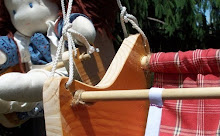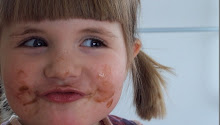I have not been able to find the origin of the Home Evaluation to link to. I will, however, share the evaluation itself. I am almost positive that it came from www.beautifulsunmontessori.blogspot.com …but for some reason can’t find it there! Definitely go check out her site though…there’s tons of wonderful resources there that I can find!!! Enjoy!
(Dry Soy Beans sorting, sifting, measuring, pouring, discovering activity)
Principles by which to Evaluate our Montessori Home…What are we doing well?...What can we do better?...What needs to change?...What do our children need?
Selected 5 qualities that we strive to encourage in the child in the Montessori environment:
Independence- self esteem comes from being able to carry things out on ones own.
Socialization- your child learning to manage himself in increasingly greater social environments.
Communication- the human need to communicate clearly, to understand and be understood.
Order- addressing the human need for patterns and structure. Applied both to the external world (your child's world) and the internal world (your child's mind). The mathematical mind.
Curiosity- The scientific mind.
Practical ideas for the home:
1. Independence
Care of the Person:
Teach them slowly how to dress themselves
Allow them to choose from limited outfits
Give them a drawer or space in their own closet where they can choose their own clothing from
Teach them where to put soiled clothing
A dress up box can aid in this practice for young three year olds
Let them brush their own teeth
A low cupboard in the kitchen where they can choose their own snack
They can help set the table
Let them participate in the kitchen
Provide them their own tools for kitchen use
Let them choose and make their own breakfast
Clear the table
Wash dishes
Teach them bathroom hygiene- let them do it themselves
If toilet is too high, put a step on it
Teach them how to use utensils properly, no reason why they shouldn't be able to use a knife
Care of the Environment:
Low work spaces
Tools that are accessible to them (sponges, buckets, soap, water)
Put a step up to your kitchen sink
Keep things in one place as much as possible so that they will know where to put them back
In the kitchen: measuring, pouring, stirring, spreading, cutting, peeling, grating, washing, seeding,
Watering the plants around the house
Wiping the table or counters
Washing hands
Mopping the floor
Making their own bed
Preparing their clothes for next day
Opening and closing curtains
Feeding animals
Putting dirty clothes in hamper
How to treat their toys
2. Social Relations
Practice wanted behaviors
Praise
Talk about positive things you see in them
Talk about positive things you see in others
“Catch them being good”
Let them hear you saying good things about others, including children, notice more of what you DO want them to do
Clear limits to unacceptable behavior
Talk about your values and what you find important
Model your beliefs
3. Communication
Clear precise communication with your child
Talk a lot with them, explain things
Sing
Read to them even when they can already read for themselves- they love the same books over and over
Let them see you reading
Tell them true stories
Prohibitions should be clear (and you should hold yourself accountable as well)
Give words to feelings
Introduce complex vocabulary
Stick to your own best language
Give realistic choices
Let them be a part of family meals
4. Order
Routines! Morning routines, and bedtime routines especially
Things have a place in your child's room, then he will know where to put them away
Not too many toys
Not too many activities to do- time to process the day is necessary
Limited sets of clothing to choose from
Limited work space
How to treat their toys
Tell them what happens before, and what will happen after
Make a picture schedule and talk about it
Give them real world word problems
Notice patterns with them
5. Curiosity, Creativity
Listen to what they have to say!
Outdoor provides much opportunity for exploration
Let them solve their own problems
Ask them what they think about things
Wonder with them
Read
Expose them to art
Give them tools for expression
Open ended toys









